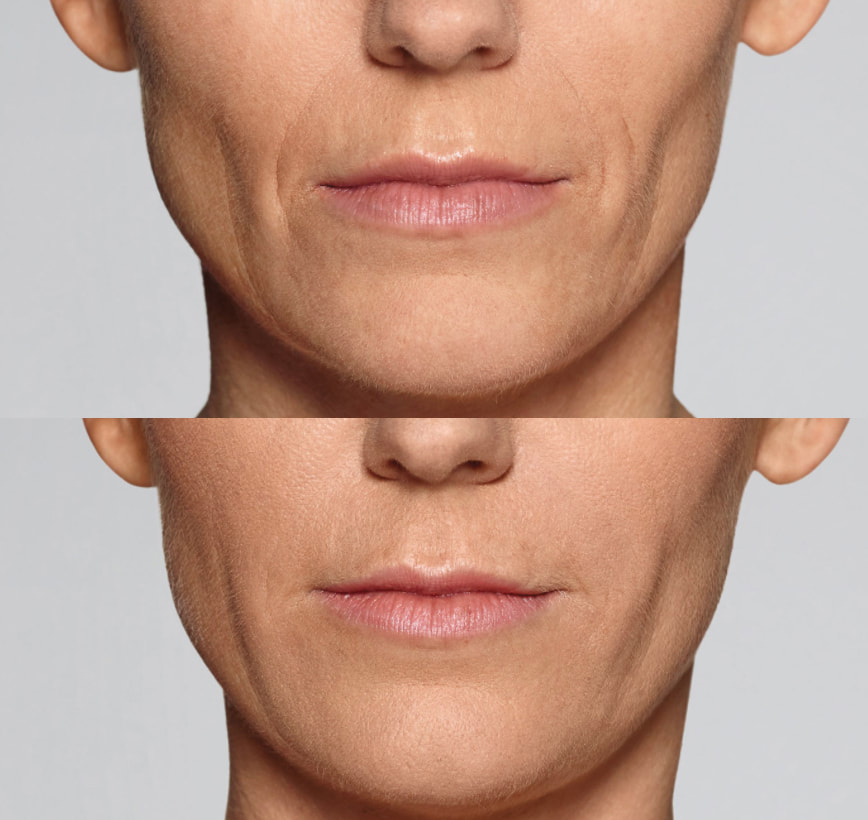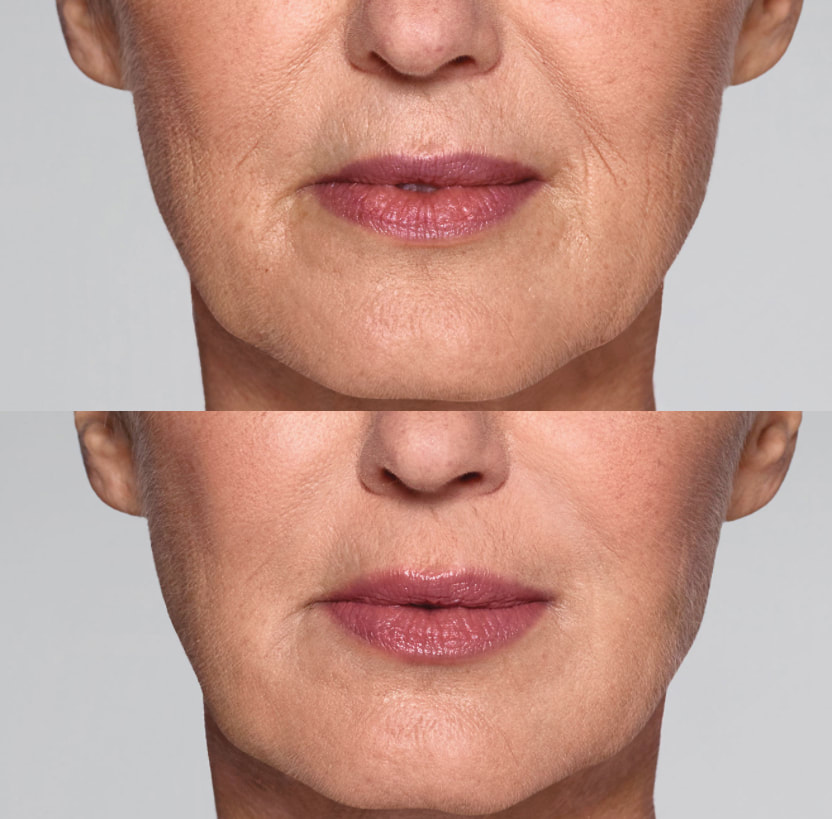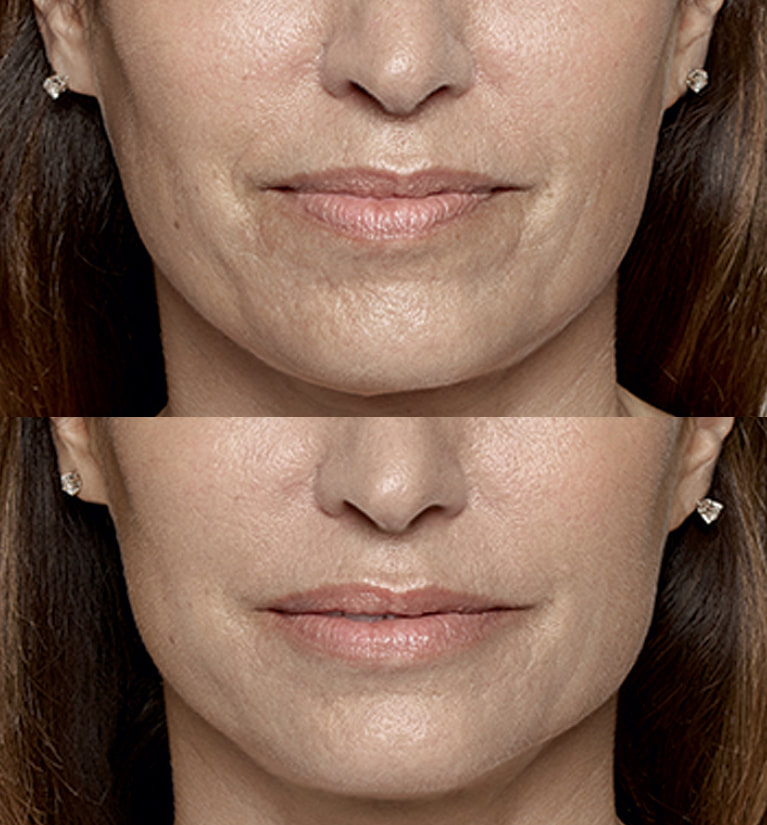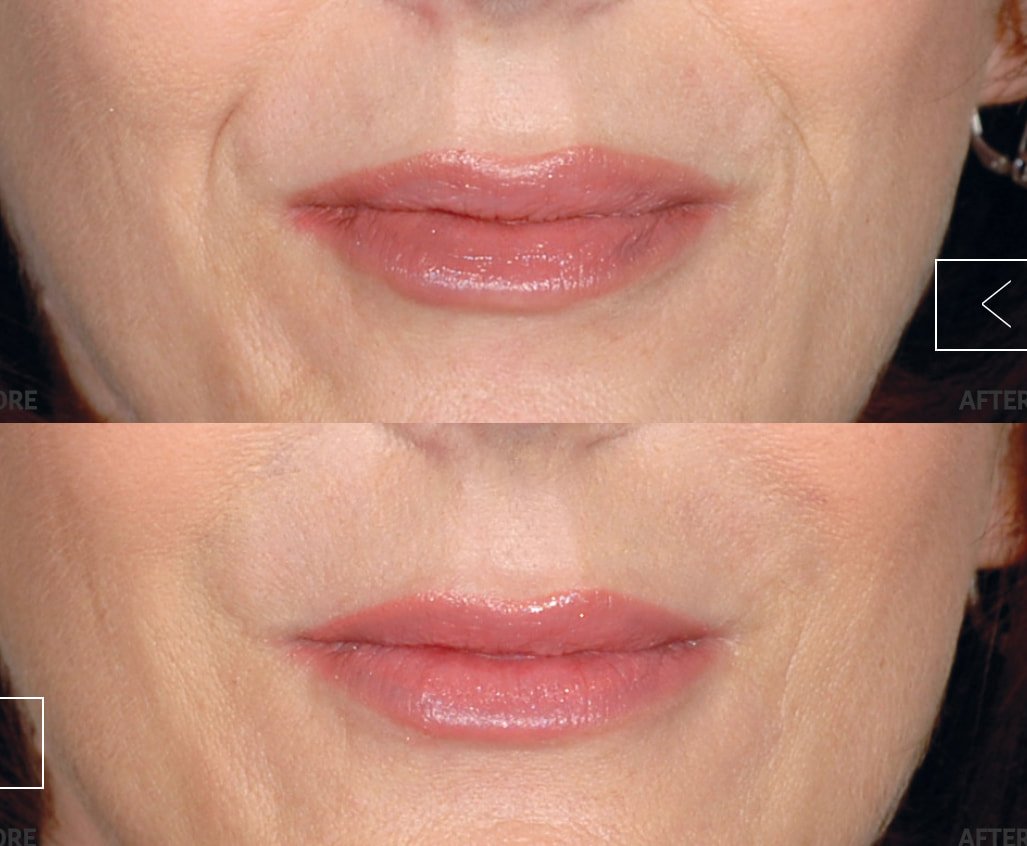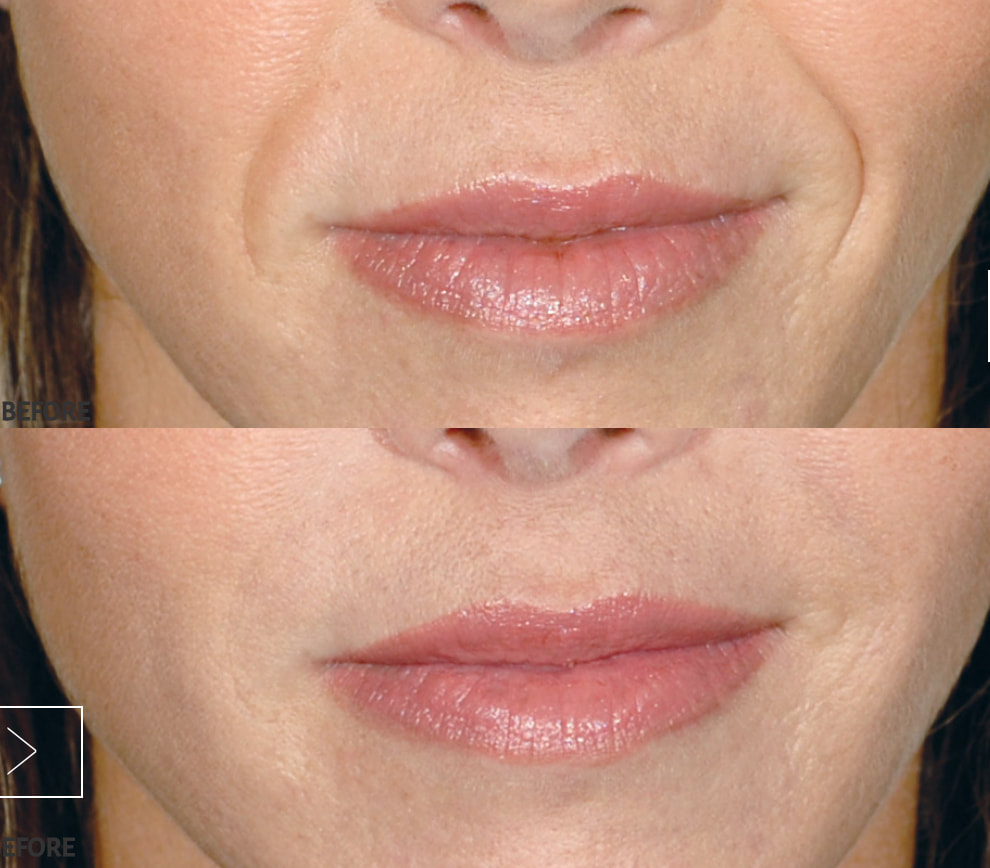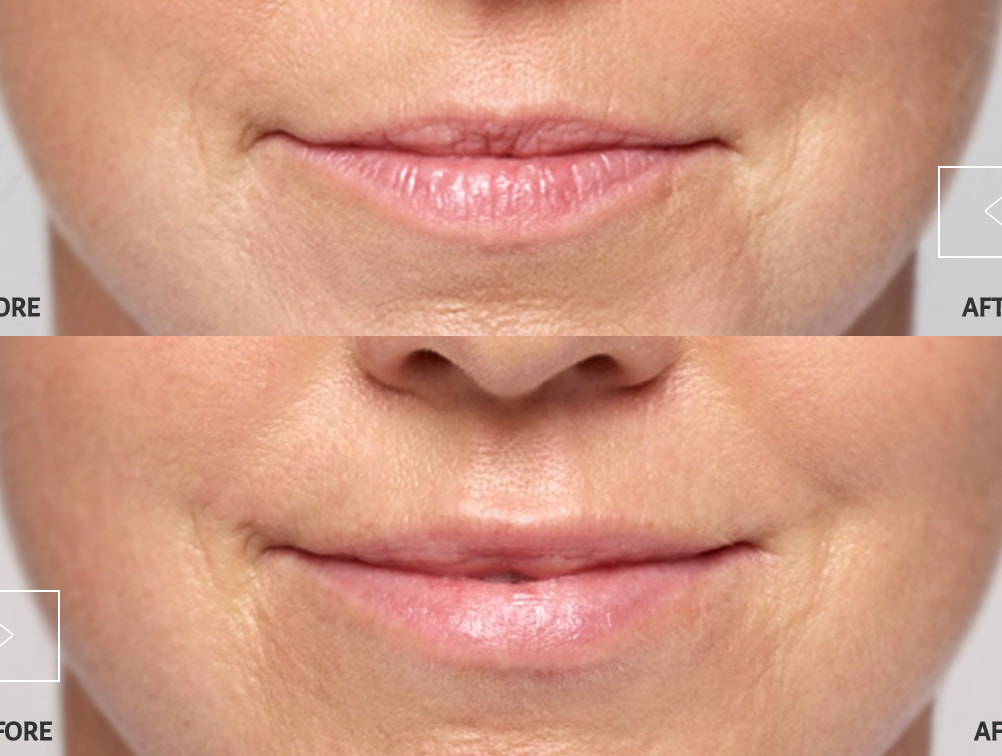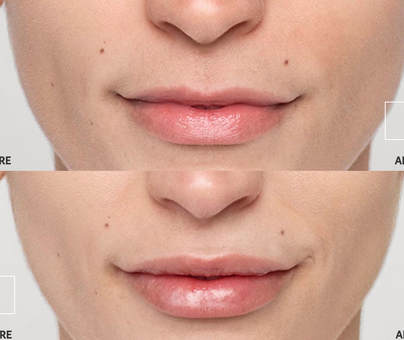|
Hyaluronic acid (more accurately called hyaluronan since the polysaccharide synthesized by mammalian cells is a salt and not an acid) is an important component of the body: it is found in synovial fluid in joints where it increases viscosity of the fluid. Hyaluronic acid is a major component of skin: production of hyaluronic acid decreases with age and with sun damage.
Restylane is one of several hyaluronic acid fillers available for augmenting tissues. (Restylane,4 Restylane Lyft,5 Restylane Refyne,2 Restylane Defyne3), providing subtle lip enhancement and smoothing the lines around them (Restylane Silk6), and adding lift and volume to the cheeks (Restylane Lyft5). |
What are formulations?
Finer particles allow for the filling of fine wrinkles and for shaping, medium-sized particles are for moderate to severe wrinkles and folds and larger particles are for severe wrinkles and volume augmentation:
What are possible side effects?
What are the possible side effects?
The most commonly observed side effects are swelling, redness, pain, bruising, headache, tenderness, lump formation, and itching at the injection site. These are typically mild in severity and typically resolve in less than 7 days in nasolabial folds and less than 14 days in lips. Serious but rare side effects include delayed onset infections, recurrence of herpetic eruptions, and superficial necrosis at the injection site.
One of the risks with using this product is unintentional injection into a blood vessel. The chances of this happening are very small, but if it does happen, the complications can be serious, and may be permanent. These complications, which have been reported for facial injections, can include vision abnormalities, blindness, stroke, temporary scabs, or permanent scarring of the skin.
As with all skin injection procedures, there is a risk of infection.
"Well, the last time I had a picture taken I could hardly see my eyes because of the weight of heavy eyelid. Then I paid attention to how I was actually using my eyes and I really noticed when I was looking at anything especially the computer I was straining my forehead to see better. Since I have had it done I no longer have to lift the forehead and tilt my head to see. It is amazing! I love..." D. Rock 63 Yrs Old with Fat Droopy Eyes - Salt Lake City, UT
What makes the tissues change on the face?
Volume loss of the cheeks occurs because of loss of fat as well as ptosis of tissues. This can result in flattening of the cheek prominence, indentations and wrinkles. Further ptosis of the tissues results in further flattening of the cheek eminence. The overlying skin will descend (or sag!). Loss of hyaluronic acid and collagen also results in static lines on the face. These are seen around the nose and the mouth. Similarly, volume is lost in lips as well.
Will I bruise?Remember that the face is full of vessels. We use cooling of the skin to reduce the risk of bruising. Some areas are more likely to bruise than others: for example, the lower eyelids and peri-oral tissues are very vascular and may bruise more easily than the forehead or the frown muscle injections. After the injections, use of ice can reduce bruising. |
"I had a excellent eye lift done by Dr. Patel. He knows what he is doing and is very pleasant. Dr.Patel was easy to get an appointment and he works with you. The office staff was very pleasant and made you feel calm." D. Gull Highly recommended for eye lift surgery - Salt Lake City, UT
I hate needles: will it be painful?We apply an anesthetic cream when patients want it. Our regular patients have an anesthetic cream prescribed which they apply before they leave home: this reduces the sensitivity of the skin sufficiently to make the injections almost pleasant! We also apply ice and we have a Zimmer cooling device which is very helpful in reducing
bruising as well as discomfort. |
How long will the effects of the injections last?Different hyaluronic acid fillers have different compositions and will have varying degrees of survival. Furthermore, areas where there is a lot of movement, like lips, the fillers get digested and absorbed by the body more quickly than more static areas like the forehead and cheeks. In general, fillers in the lips and nasolabial folds will last about six months, fillers in the frown lines last longer than a year, and, using the correct materials, cheek fillers will last one to two years.
|
How often will I need injections?This is very much a combined decision between the surgeon and the patient. As the fillers gradually wear off , there is no fixed time between fillers. Overall, photographs taken prior to any fillers being used are useful in helping decide when the next fillers may be helpful. Furthermore, a conservative volume augmentation is always better than an aggressive over-filled appearance.
|
How do I avoid the “Stupid over-filled” look?
|
By following our advice! Just as discretion is always the better part of valour, so is a conservative filling regime better than overly-aggressive injections. We will guide you and always choose the minimal filler to give you an improvement in volume, shape or position. Carefully and anatomically placed fillers can achieve wonders: it isn’t
just a matter of shoving it in willy-nilly. |
Schedule Your Consult Today |
|
Visit Patel Plastic Surgery on YouTube for more free tips!
Stay Connected With Us On Social Media
|
Find UsLocations:
Dr. BCK Patel MD, FRCS 1025E 3300S Salt Lake City, Utah 84106, USA (801) 413-3599 (phone/text) E: [email protected] bckpatel.info Dr. BCK Patel MD, FRCS 585 E Riverside Dr Suite 201 Saint George, UT 84790 (435) 215-0014 E: [email protected] Quick-Link |
Let Us answer your questions |

